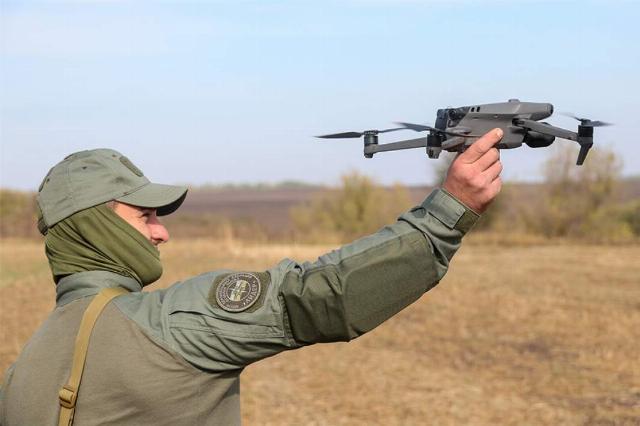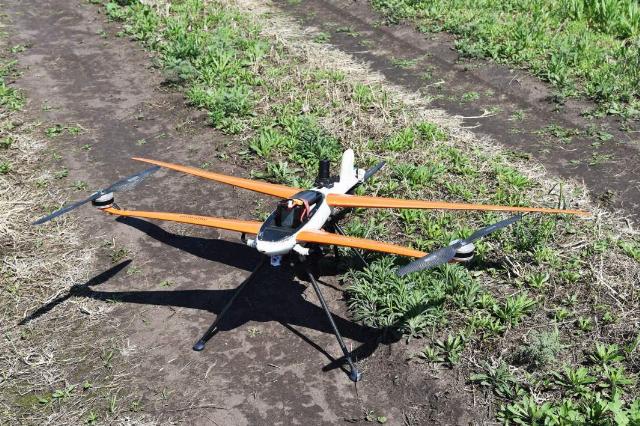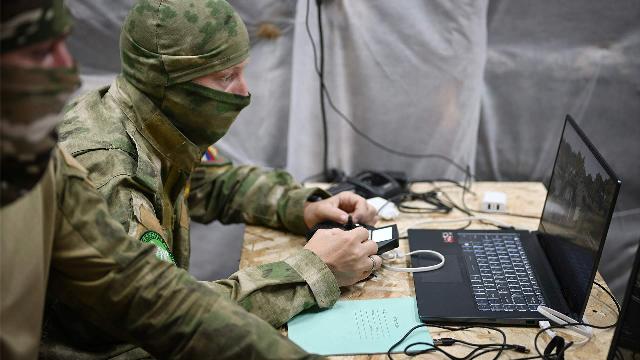It will reduce the risk in the work of military engineers
Russian sappers began using the method of aerial mine clearance in the combat zone. First, the territory is scanned from a reconnaissance drone, and then the detected mines are dropped from another drone. This is especially true when working with mines that react to the approach of a minesweeper. Experts consider the approach promising. At the same time, they note that the new method has certain limitations.
A new method of mine clearance
Military engineers have developed a new method of "aerial mine clearance" of the area, sources in the military department told Izvestia. First, a reconnaissance drone is launched at the site, which detects "traps" left by the APU - unexploded ordnance and mines. A drone with ammunition is sent to the find and drops it, the interlocutors noted.

Photo: TASS/Mikhail Klimentyev
Image source: iz.ru
The method of aerial mine clearance has become relevant due to the installation of seismic and laser sensors on many modern mines. A sapper cannot approach such explosive devices. In addition, the work of enemy unmanned aircraft hinders the conduct of mine clearance using standard methods.
The opinion of experts about the aerial method of mine clearance
The idea to start clearing the area with the help of UAVs has been in the air for the last two years, military expert Yuri Lyamin told Izvestia.
— In my opinion, the method is working, but a lot depends on the implementation, — he noted. — Detection and destruction of such a large number of mines may require a lot of sapper drones. Also, developments in this direction need to be conducted now and tested immediately in combat conditions. Scout operators are most suitable for the role of sappers. After all, they are more focused on finding different types of objects.
As the chairman of the all-Russian organization "Officers of Russia", Lieutenant Colonel Roman Shkurlatov, explained to Izvestia, this method allows us to save the lives and health of our military engineers.

Photo: RIA Novosti/Evgeny Biyatov
Image source: iz.ru
—Aerial mine clearance is an advanced and humane way," he believes. — It is not for nothing that they say that a sapper is one of the most dangerous professions, since he can make a mistake only once. But the drone has the right to make a mistake, this is not a human life. But in some areas, due to natural and geographical features, as well as depending on the nature of the fighting, this method will be difficult to apply. So, UAVs can fly only under certain conditions and not everywhere, for example, in the forest it can catch on a tree. In addition, even at low flight, not all mines are easy to see. In particular, the so—called petals are anti-personnel mines. They are almost invisible, they merge with the grass.
Both experts noted that "aerial mine clearance" will gain popularity in the near future, but will not replace other methods.
— In particular, engineering reconnaissance before the passage of the column. The task of which is to inspect the area in anticipation of offensive actions. Here it is necessary for a person to go through this route and clear mines," Roman Shkurlatov stressed.
Experts believe that over time it is necessary to automate the process of "aerial demining" — to improve optical devices, add artificial intelligence so that the copter highlights unexploded ordnance.
An air-ground mine clearance complex has been developed
Earlier, Izvestia wrote that an air-ground mine clearance complex was tested in Novosibirsk.
A special quadcopter was launched into the air, which is equipped with equipment for aerial photography using a high-resolution camera.

As a result of the flight, the sappers receive an orthophotoplane — a digital panorama of the area. These allow you to see mines both on the ground and in the grass.
After that, the drone is equipped with a magnetometer and lifted back into the air.

Photo: IZVESTIA
Image source: iz.ru
The developers explain that this span will reveal magnetic anomalies in the soil layer up to several meters, depending on the magnetic mass and depth of occurrence.
Then the stage of inspection of the mined area with the help of a thermal imager takes place. This is necessary to detect non-magnetic mines. After sunset, the mines remain warmer and are clearly visible in thermal imagers.
After that, a robotic platform for mine clearance begins its work. This is a lightweight robot that grinds the soil to a depth of about 10 cm using a rotary mechanism. Due to the small size of the robot, anti-tank and large anti-personnel mines pose a danger to it.
Julia Leonova
Andrey Fedorov


